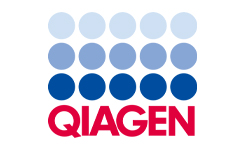Genomics and Molecular Pathology
CtDNA in patient care: The risks and the rewards
Genomics and Molecular Pathology
CtDNA in patient care: The risks and the rewards
1pm – 1.30pm BST, 22 September 2025 ‐ 30 mins
Genomics and Molecular Pathology
Abstract
Circulating tumour DNA (ctDNA) represents a promising frontier in precision medicine, offering a minimally invasive window into the spatially- and temporally-heterogeneous genomic landscape of cancer. While the rewards of integrating ctDNA into routine care can be substantial, they are not without their risks.
This talk will introduce the key features of ctDNA as a biomarker, review various utilities and limitations in the research and clinical settings to date, discuss key practical considerations for implementing a clinical service, and consider potential future liquid biopsy development in patient care.
Learning outcomes
Delegates attending this presentation will:
- Understand the potential clinical utility of ctDNA testing in patient care
- Understand the pathway from sample collection to report, potential risks and how these can impact patient care
- Recognise the relative benefits to consider during assay selection
- Future development of liquid biopsy with and beyond ctDNA
Speakers

Unified metagenomic method for rapid detection of microorganisms in clinical samples
Genomics and Molecular Pathology
Unified metagenomic method for rapid detection of microorganisms in clinical samples
1.30pm – 2pm BST, 22 September 2025 ‐ 30 mins
Genomics and Molecular Pathology
Learning outcomes
This presentation will cover:
- Human DNA depletion for increasing sensitivity and reducing the TAT
- Detection of RNA and DNA microorganisms
- One sample, one test for detection of any type of microorganisms
Speakers

An introduction into long-read technology
Genomics and Molecular Pathology
An introduction into long-read technology
2pm – 2.30pm BST, 22 September 2025 ‐ 30 mins
Genomics and Molecular Pathology
Speakers
Optimising FLT3-ITD NGS for measurable residual disease detection in AML
Genomics and Molecular Pathology
Optimising FLT3-ITD NGS for measurable residual disease detection in AML
2.30pm – 3pm BST, 22 September 2025 ‐ 30 mins
Genomics and Molecular Pathology
Abstract
FLT3-ITD (Fms-like tyrosine kinase 3 internal tandem duplication) mutations are prevalent in acute myeloid leukaemia (AML) and are associated with poor prognosis. As a marker of measurable residual disease (MRD), FLT3-ITD presents both opportunities and challenges depending on the detection method and clinical context. Here we aim to discuss the strengths and limitations of fragment analysis and next-generation sequencing (NGS) in FLT3-ITD detection, highlight method selection for MRD monitoring stages, and addresses key limitations in its clinical use.
Fragment analysis (capillary electrophoresis) remains a widely used technique due to its accessibility, speed, and ability to quantify ITD allelic burden. However, it has limited sensitivity (~1–5%) and may fail to detect low-level MRD. Additionally, it struggles with complex or longer insertions, particularly when polyclonal FLT3-ITD variants exist. In contrast, NGS offers significantly improved sensitivity (as low as 0.001%), can detect low-frequency clones, and provides detailed sequence-level information, enabling better resolution of polyclonal architecture and clone evolution over time.
For initial diagnosis and early post-treatment assessments, fragment analysis is often sufficient. However, for longitudinal MRD monitoring, particularly in patients with low disease burden or approaching transplant, NGS is the preferred method due to its superior sensitivity and specificity. Despite its utility, FLT3-ITD has inherent limitations as an MRD marker. These include instability of the mutation during treatment, potential loss or emergence of ITD clones, and difficulties in standardising NGS-based MRD thresholds. Furthermore, FLT3-ITD may not be the founding clone, limiting its reliability as a sole MRD target in some cases.
In conclusion, selecting the appropriate detection method and understanding the biological variability of FLT3-ITD are essential for accurate MRD monitoring. Integration of NGS into MRD workflows enhances detection but must be interpreted within the broader context of clonal evolution and other genetic markers.
Learning outcomes
Delegates who attend this presentation will:
- Evaluate Detection Methods: Understand the strengths and limitations of fragment analysis versus NGS for FLT3-ITD detection.
- Method Selection: Determine the appropriate FLT3-ITD detection method for each MRD monitoring stage.
- Recognize Limitations: Identify challenges and limitations in MRD monitoring using FLT3-ITD as a marker.
Speakers

Homologous recombination deficiency (HRD) – Significance and clinical implications
Genomics and Molecular Pathology
Homologous recombination deficiency (HRD) – Significance and clinical implications
3.45pm – 4.15pm BST, 22 September 2025 ‐ 30 mins
Genomics and Molecular Pathology
Abstract
Homologous recombination deficiency (HRD) has emerged as a critical biomarker in oncology, reflecting defects in the DNA repair pathway that contribute to genomic instability, cancer development, and treatment response.
HRD is particularly significant in cancers such as ovarian, breast, prostate, and pancreatic, where targeted therapies, such as PARP inhibitors, have shown clinical benefit. In practice, several methodologies and technologies are available to assess HRD status, with varying sensitivity and specificity. The National Genomic Test Directory (NGTD) mandates HRD testing across all Genomic Laboratory Hubs in England. At the South East GLH, we undertook an extensive validation process for a newly implemented, comprehensive next generation sequencing (NGS) panel. Comparative analysis with orthogonal assays and whole genome sequencing demonstrated acceptable concordance levels, supporting its clinical adoption. Crucially, assessment of HRD status beyond BRCA1/2 mutations is now pivotal for prescribing PARP inhibitors in ovarian and prostate cancers within England.
The talk will also address mechanisms of resistance to PARP inhibitors, an emerging challenge in clinical practice, and discuss how advancements in HRD testing may refine patient selection and guide future treatment strategies.
Learning outcomes
Delegates attending this presentation will:
- Understand the concept of HRD and its biological significance.
- Explore current techniques and technologies used to detect HRD.
- Assess the role of HRD testing in guiding treatment decisions and patient care.
- Consider emerging trends and advancements in HRD testing for future implementation.
Speakers

Dr Katya Mokretar PhD, DipRCPath, FIBMS
AML-MRD Team Lead, Deputy Operations Lead, Synnovis
Exciting developments in spinal muscular atrophy (SMA): From testing to therapeutic treatment
Genomics and Molecular Pathology
Exciting developments in spinal muscular atrophy (SMA): From testing to therapeutic treatment
4.15pm – 4.45pm BST, 22 September 2025 ‐ 30 mins
Genomics and Molecular Pathology
Abstract
This presentation is a rare opportunity to hear about a new assay which reduces the testing time for Spinal Muscular Atrophy (SMA) from 2 days to 3 hours. It will also describe this fatal disease, the complexity of testing and discuss the recent implementation of gene therapies which have been revolutionary for SMA patients.
SMA is an autosomal recessive severe, progressive neuromuscular disorder due to deletions, and rarely single nucleotide pathogenic variants (SNVs), within the SMN1 gene. It is a leading cause of infant mortality and affects 1 in 100,000 births. Patients present as “floppy infants” with early onset of muscle weakness, failure to achieve motor milestones, and limited survival without ventilatory support in the most severe cases. The introduction of disease-modifying treatments has significantly improved the survival and motor development in children with SMA. A greater benefit from these treatments is achieved when initiated as early as possible in the disease progression.
Testing for SMA caused by deletions of SMN1 is performed by all Genomic Laboratory Hubs (GLHs) as part of the National Genomic Test Directory (NTD). At the South East GLH we are also one of the few centres that perform SMN1 sequencing to look for SNVs. SMA testing is complex due to the presence of a closely related pseudogene SMN2, the presence of which also modifies the phenotype of patients.
The NHS mandated test for SMA takes 2 days and has a turnaround time of 14 days for urgent referrals. In our laboratory we have developed and validated a digital PCR assay which takes ~3 hours. This improved turnaround time will enable earlier access for life changing treatment for SMA patients.
Learning outcomes
Delegates will learn:
- how a multidisciplinary urgent service works end to end
- the difference a test can make to providing a service
- knowledge of one of the most common neurological diseases
Speakers

Public Health Wales Genomics Programme
Genomics and Molecular Pathology
Public Health Wales Genomics Programme
4.45pm – 5.15pm BST, 22 September 2025 ‐ 30 mins
Genomics and Molecular Pathology
Speakers
Opening and Closing Plenary programmes






